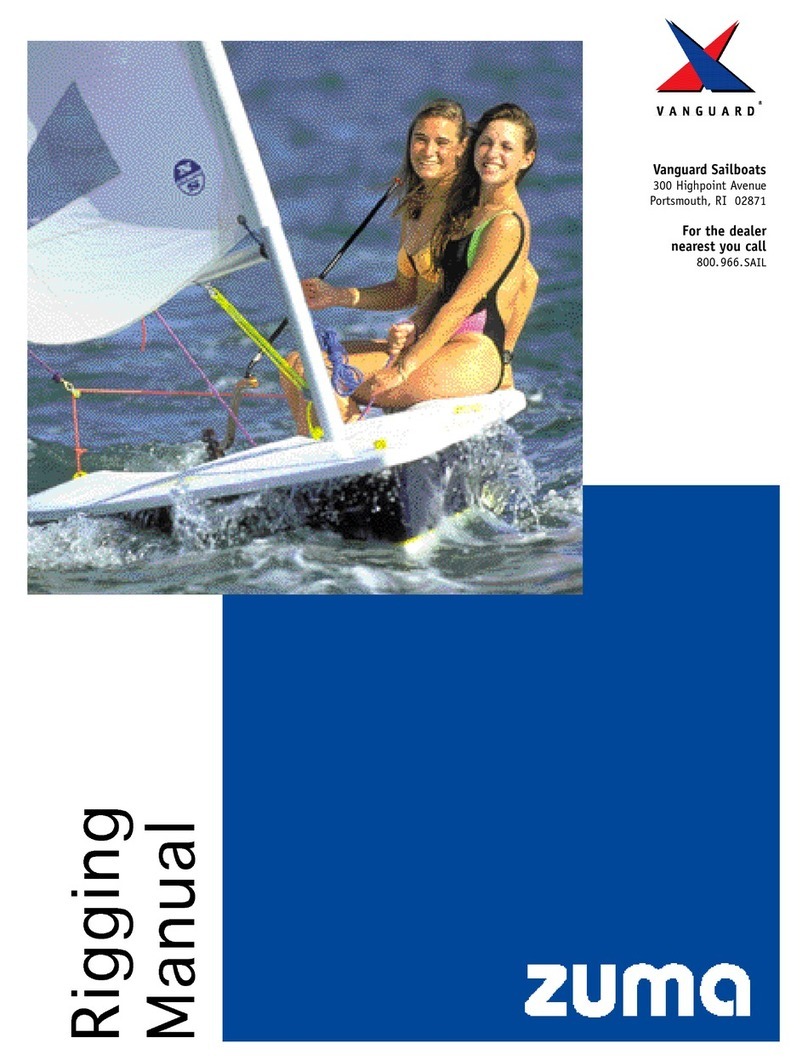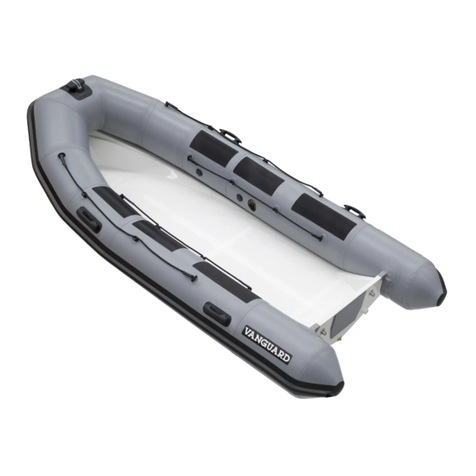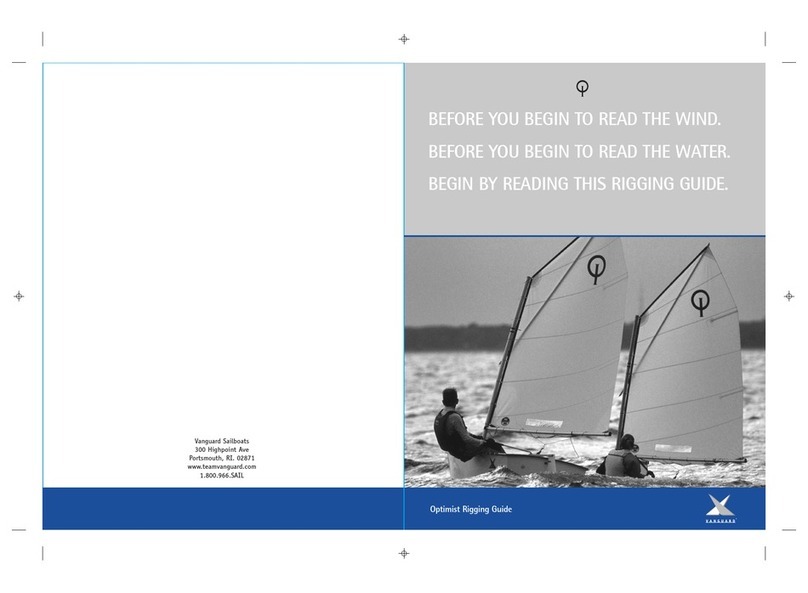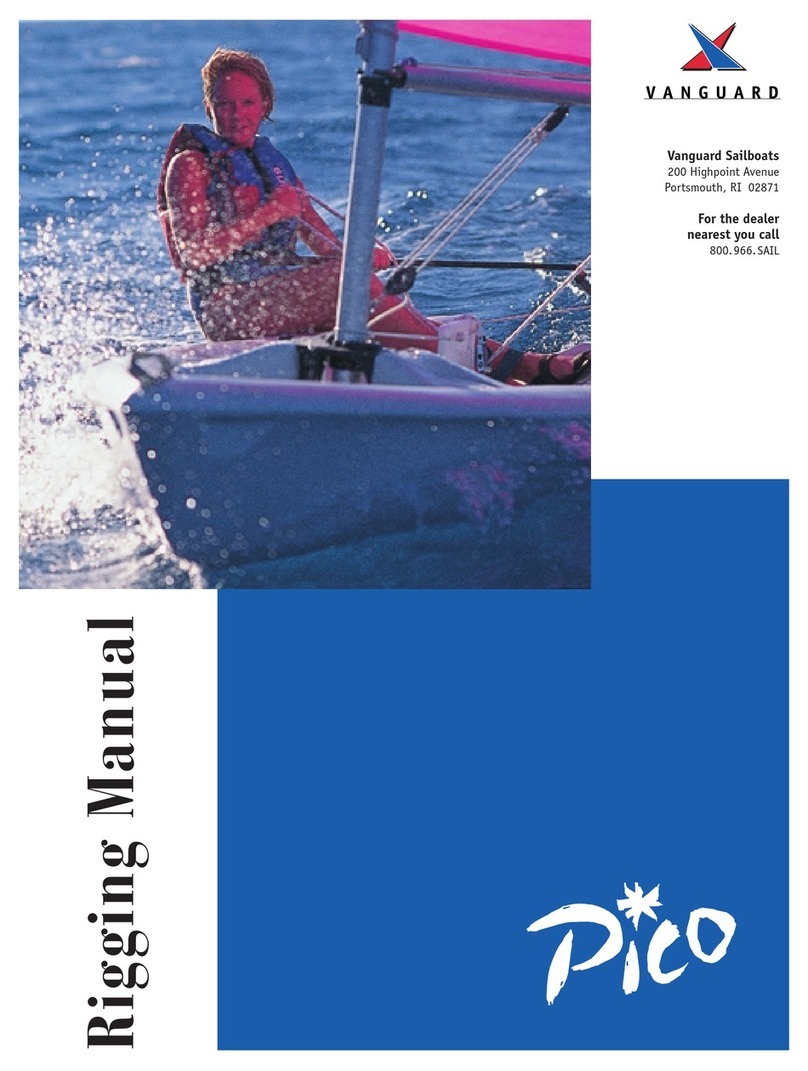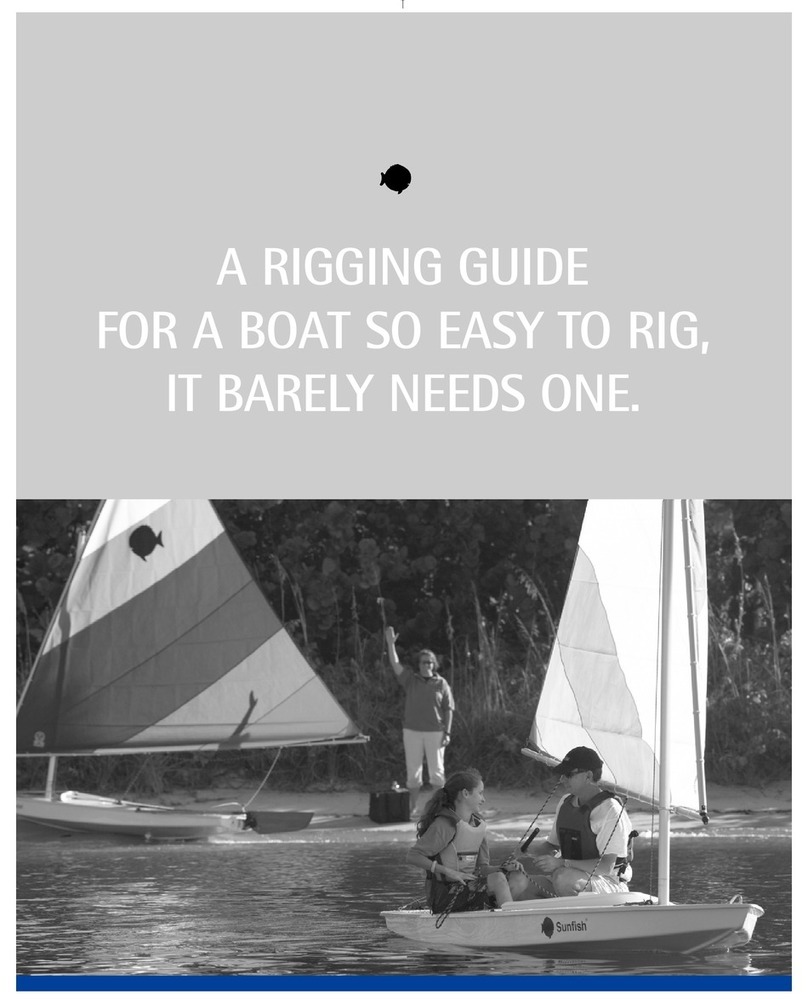2
www.te mv ngu rd.com
Rigging
Locate the daggerboard shockcord (in the line bag) and attach each
end to the eyestraps that secure the forward end of the hiking straps.
You may have to raise the line bags to locate the eyestraps. Make
sure your knot is very tight; shockcord easily unties itself.
Assembling the mast
The mast comes already rigged except for the spreaders, which are
taped to the mast. Remove all tape, and untie the halyards; secure
them loosely around the mast so they won’t be lost when stepping.
Before you install the spreaders, make sure the hoist end of the main
halyard (which comes off the aft side of the masthead sheave) is aft
of the spreader brackets and all other rigging is forward. This will
save you a lot of aggravation later on. Locate the spreaders and pull
the clevis pins out of the spreader brackets.
Spreader installation
Slide the end of each spreader with two holes into the brackets on
the mast, with the thin edge facing aft on the mast (toward the sail
track). Line up the holes, reinstall the two clevis pins, and reattach
the cotter rings. Remove the clevis pins in the outboard end of each
spreader and pull out the small clip. After locating the port upper
shroud, slide the clip onto it and back into the port spreader; then
reinsert the clevis pin. Repeat for the starboard upper/spreader.
Double check there is no rigging running between the upper ends of
the shrouds and the spreaders. For extra security, tape around the
spreaders to keep the cotter rings from working loose.
Step mast
Check there are no overhead wires in the area and make sure all hal-
yards are secured so they won’t be lost. Two people are recommend-
ed to step the mast. The taller person should place the mast heel
against a solid object, lift the top end, and walk toward the heel, rais-
ing it hand over hand until the mast stands vertical. Rotate the mast
until the track faces toward the stern of the boat, and keep your
hands a good distance apart while lifting the mast over the step.
Align the mast heel so that the groove fits over the middle pin in the
deck fitting. Once the mast heel is in the step, the second person
should attach the shroud on the opposite side of the boat by remov-
ing the bottom clevis pin and reassembling it through the chain plate
on the rail. Attach the second shroud the same way; then lean the
mast forward against the shrouds and tie off the headstay If you will
be using a bowline, attach the headstay to the clevis pin just aft of
the shackle and tie the bowline into the shackle. Otherwise, tie the
headstay directly to the shackle. Tighten it just enough so the mast
will not fall over; the jib halyard will tension the rig for sailing.
Recommended shroud position: Count up the following number
of holes from the bottom of the adjuster in the back row: 4 for light
air, 2 for medium air, 0 for heavy air (bottom hole).
Assembly
Daggerboard






